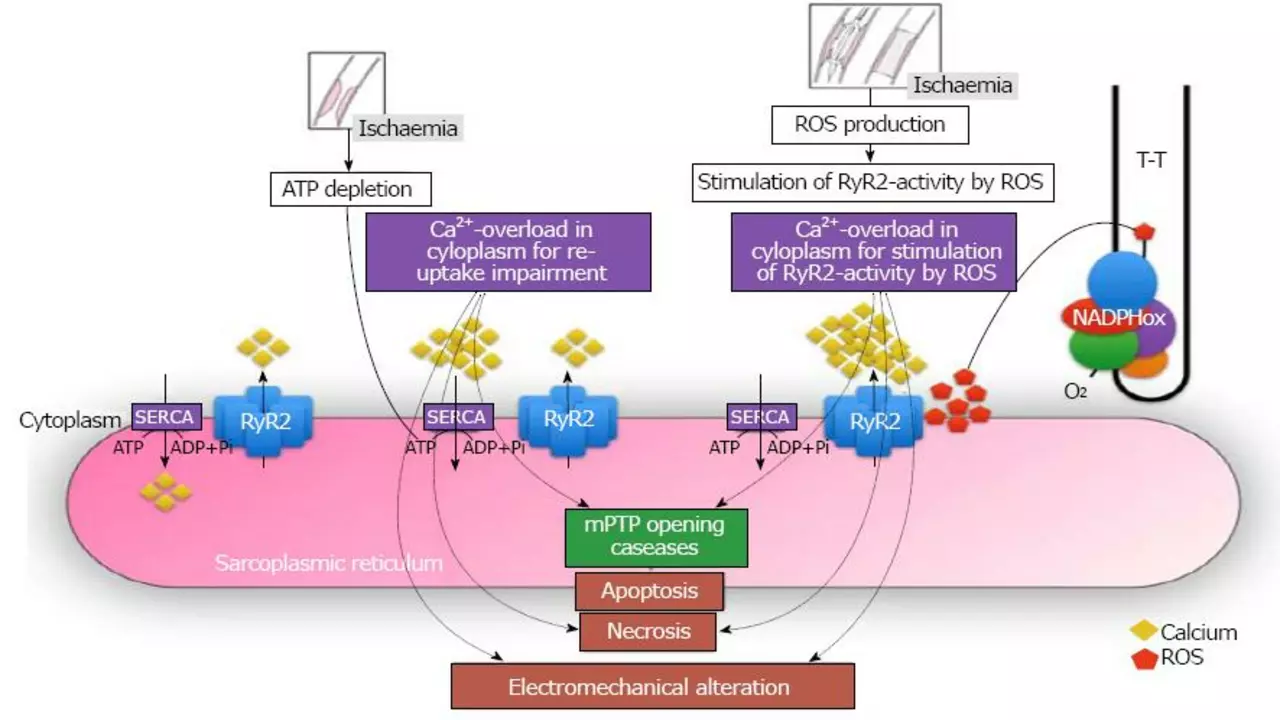Reperfusion Injury Explained in Simple Terms
If you’ve ever heard doctors talk about “reperfusion injury,” you might wonder why fixing a blocked artery could still cause harm. The short answer is that when blood rushes back into tissue that’s been starved of oxygen, it can trigger an angry inflammatory response. This reaction can damage cells just as badly as the original blockage.
Understanding the basics helps you ask better questions at the doctor’s office and spot ways to protect your heart, brain, or muscles after an event like a heart attack or stroke.
What Happens During Reperfusion?
When blood flow is blocked (ischemia), cells switch to a low‑oxygen mode. They start producing waste chemicals and become fragile. As soon as the blockage clears, oxygen floods back in. That sudden boost creates free radicals—tiny, highly reactive molecules that can tear cell walls.
The body also sends out white blood cells to clean up the mess. Unfortunately, those cells release more inflammatory substances that can worsen swelling and scar tissue formation. The combo of free radicals and inflammation is what we call reperfusion injury.
It’s not just a heart problem. The same process shows up in kidney transplants, limb surgeries, and even after severe burns. Knowing the pattern means you can look for common signs like sudden chest pain, unusual fatigue, or swelling after an operation.
How to Reduce Damage
Doctors have a toolbox of tricks to keep reperfusion injury in check. Some treatments are already standard, while others are still being studied. Here are the most practical approaches you might hear about:
- Controlled Re‑oxygenation: Instead of blasting oxygen all at once, some protocols slowly restore flow. This gives cells a chance to adjust.
- Antioxidant Therapy: Medications like N‑acetylcysteine or vitamins C and E can mop up free radicals. Talk to your clinician about whether supplements are appropriate for you.
- Anti‑inflammatory Drugs: Certain steroids or newer agents target the inflammatory cascade that follows reperfusion. They’re often used in heart attack care.
- Ischemic Preconditioning: A brief, intentional restriction of blood flow before a planned surgery can “train” your tissue to handle the later surge better.
If you’re recovering from a heart attack, follow your doctor’s medication plan closely and keep an eye on side effects. Lifestyle tweaks—like quitting smoking, eating antioxidant‑rich foods, and staying active—also give your cells extra resilience.
In emergencies, time is still the biggest factor. Getting treatment fast reduces the length of ischemia, which in turn limits how much reperfusion injury can happen. So if you suspect a heart attack or stroke, call emergency services right away.
Bottom line: Reperfusion injury is a double‑edged sword that comes with restoring blood flow. By understanding why it occurs and what steps doctors can take, you’re better equipped to ask the right questions and follow up on care plans that protect your organs in the long run.

The Role of Antioxidants in Preventing Reperfusion Injury
In my latest exploration, I delved into the critical role antioxidants play in preventing reperfusion injury. This type of injury occurs when blood flow resumes to the tissue after a period of ischemia or lack of oxygen. The sudden oxygen surge can cause significant tissue damage, a process antioxidants help to counteract. These superheroes of the cellular world neutralize harmful free radicals produced during reperfusion, reducing inflammation and cell death. Ultimately, antioxidants play a pivotal role in protecting our bodies during these potentially harmful events.